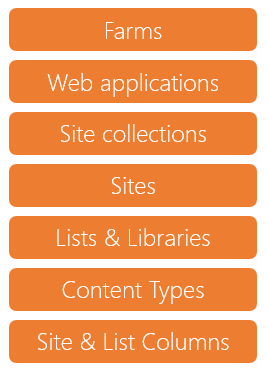Happy New Year!

The last day of the year! It’s time to say goodbye to 2013 and celebrate with friends and family! Here is a short round-up for 2013 and a few words on what to expect from 2014.
2013 have been another busy year for us at SharePointPeople. We have been involved more than ever with implementing professional governance practices around SharePoint. It seems like more people are now realizing the importance of governance and are making the required investments into securing information, focus resources and efforts, and making SharePoint a compliant platform for information management and collaboration.
We have – in 2013 – invested in new strategy services, helping clients understand the potential impact of SharePoint to the business, and translating that into something that can be implemented, measured and controlled. We have had the chance to work with this important area with several clients throughout 2013, and we will continue invest in this in 2014. In the pipeline are new updates for the governance framework, implementing a methodology and tools for building your SharePoint strategy, and further down the road, we plan to make more announcements in that area.
The SharePoint Governance Framework have been updated with new tools. Especially around what we call the “Managed Systems Catalogue”, we think that we have made some significant enhancements. A few companies are in the process of implementing these changes already, and we hope that many other will embrace this new methodology in the new year.
Also, we have sharpened our implementation process for SharePoint Governance projects, making what used to be a blurred process into a sharp scope and step-by-step guide to implementing governance for SharePoint. The benefit of this is clear; get a working practice for governance quickly and develop from there. This will save time and resources, and – based on the principles of the SharePoint Governance Framework methodology – help organizations keep the governance practice alive, throughout the lifetime of the platform.
We wish all our clients, partners, friends and family a Happy New Year! We think that 2014 will be even more exiting, and we are looking forward to share all our thoughts and experiences with you soon.
Challenges and gains from doing Information Architecture in SharePoint
In discussions of SharePoint Governance, there is no way around talking about design. Not only the infrastructure – this is of relevance – but a more important discussion is Information Architecture – or IA.
To start with, we need to have a common understanding of what Information Architecture is all about across the project team. IA can be defined as “The structural design of shared information environments” (Source: Wikipedia). But in different disciplines there are often different definitions.
When working with a specific technology for managing and sharing information, there are probably specific areas that you need to address in IA. Information Architects often use a concept and a model for architecting the structure of information in a system, but with standard systems like SharePoint, a lot of these decisions have been made for us. So when getting to the part, where we must label information in SharePoint for better usability and findability, the platform comes with tools and concepts that we must use.
Must use? This sound like a bit of a straitjacket, and it is. If you are not experienced with the concepts used to structure information in SharePoint, you will feel probably this as a pretty painful process. And even if you are experienced, you are likely to run into limitations in the technology, that forces you to make specific design decisions. So, a reasonable question to ask would be; if SharePoint is a good tool for managing content at all?
The answer is – absolutely yes! Experiencing limitations are common – almost given – for any standard software platform. The entire purpose of having a standard platform is that we do not have to make every detailed decision on our own. SharePoint – as a content management platform – is one of the most widely adopted technologies, in terms of usage scenarios. It’s capabilities to provide structured document management, records management, web content management and social collaboration, is pretty unique. And the value of being able to do all these things on a common IA foundation can generate huge value to businesses.
Imagine having to define a complete model for structuring documents and information of all sorts, across your company. The task seems impossible and making the business case is an uphill battle. Even though providing this global IA is not entirely, what SharePoint does for you, many companies are in fact using SharePoint as the host for the majority of documents and collaborative information. This means, that they can implement common labeling across documents and data, relevant to the navigation of information stores and applications, searching across multiple sources and apply a common set of information policies. The straitjacket has turned into a value adding toolset.
Information Architecture work in SharePoint, involves competences from several roles; technical architects, information architects, business decision makers, process owners and more. You should make IA a collaborative effort to address all relevant requirements and opportunities and make your shiny new SharePoint platform manageable and scalable, as well as “adoptional“.





